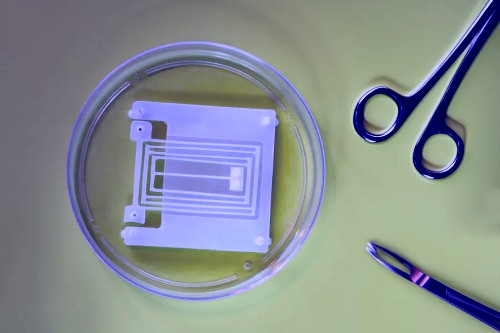Brain Changes Seen with Dysmenorrhea
Abnormal structural changes in areas of the brain involved in pain and emotion can be seen on MRI in young women with primary dysmenorrhea, and persist even when the women are not experiencing cyclic menstrual pain, researchers found.
When MRI scans were performed during the pain-free peri-ovulatory period of the menstrual cycle, abnormal decreases were observed in regions involved in pain transmission and higher sensory processing, while decreases were seen in regions involved in endocrine function and pain modulation, according to a study published online in Pain.
Studies of patients with chronic pain have shown that extended nociceptive input to the central nervous system can lead to structural and functional alterations throughout the nervous system and to central sensitization, explained Cheng-Hao Tu, MD, of the National Yang-Ming University in Taipei, Taiwan, and colleagues.
But the pattern of change has not been elucidated for cyclic pain, such as is seen in dysmenorrhea, so they enrolled 32 women with the disorder and 32 matched controls who did not experience severe menstrual pain.
Patients had a mean age of 23.84, and mean pain duration was 10.19 years.
Those with dysmenorrhea had mean scores on the McGill pain questionnaire of 37.09 (out of a total 78).
No significant differences were seen on MRI for total gray matter volume between patients and controls, but numerous regional differences in gray matter were detected.
For instance, patients had increased volume in the right posterior hippocampus/parahippocampus, the anterior/dorsal posterior cingulate cortex, the hypothalamus, and the left ventral portion of the precuneus.
The hypothalamus was of particular interest because of its central role in regulating the menstrual cycle, responding to elevated estrogen levels through the hypothalamic-pituitary-gonadal axis.
Excessive uterine activity seen in dysmenorrhea is thought to be caused by excessive production of prostaglandins. This release may be accompanied by a periodic estrogen assault on the hpothalamus, resulting in long-lasting reactive structural changes, the researchers hypothesized.
They saw reduced volume in the medial prefrontal cortex, the right central and right ventral portion of the precuneus, and the bilateral secondary somatosensory cortices and posterior insula of women with dysmenorrhea. All are areas that appear to play an important role in the integration of sensory information with pain affect.
The researchers then performed a correlation analysis, which revealed that the gray matter volume of the right superior frontal gyrus in the medial prefrontal cortex was negatively correlated with pain scores (Z=3.28, P<0.005), while the volume of the left precuneus correlated positively with pain scores (Z=2.52, P<0.01). The negative correlation between pain scores and medial prefrontal cortex volume "suggests abnormal disinhibition of regions contributing to the generation of the pain experience," they wrote. In a whole-brain analysis there was a positive correlation between patients' pain scores and gray matter volume of the right anterior cingulate cortex and dorsal posterior cingulate cortex and the rectal gyrus within the bilateral medial orbitofrontal cortex. In addition, a negative correlation with pain scores was seen in the superior frontal gyrus within the bilateral dorsilateral prefrontal cortex. These were particularly noteworthy findings, according to the researchers, because the dorsilateral prefrontal cortex, a region important for top-down pain control, has been implicated in disinhibition of orbitofrontal networks that can enhance the negative affect associated with dysmenorrhea. However, the study results should be interpreted with caution, the authors wrote, because with current MRI techniques the contribution of other factors such as changes in spine/synapse density and blood flow cannot be measured. "Our results demonstrated that abnormal [gray matter] changes were present in [primary dysmenorrhea] patients even in the absence of pain. This shows that not only sustained pain but also cyclic occurring menstrual pain can result in longer lasting central changes," the researchers concluded. The functional consequences of these findings remain to be analyzed, and longitudinal studies are needed to explore hormonal interactions and whether the brain changes are reversible.









Post Comment
You must be logged in to post a comment.